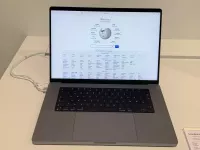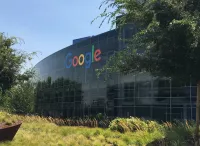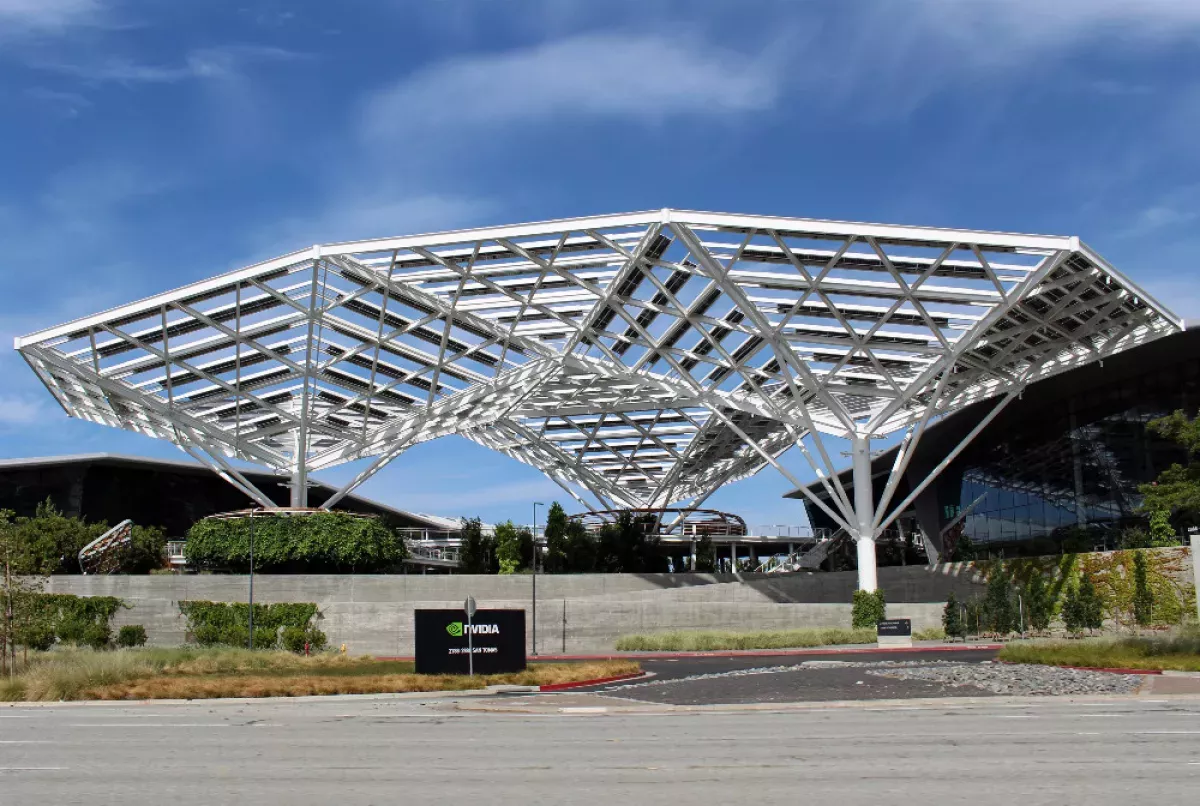Nvidia is a technology company based in Santa Clara, California, founded in 1993 by Jensen Huang, Chris Malachowsky, and Curtis Priem. It specializes in developing GPUs, SoCs, and APIs, targeting areas like data science, high-performance computing, and mobile/automotive applications. Nvidia is considered a major player in the technology industry and is sometimes referred to as a Big Tech company.
1992: Decision to Start Nvidia at Denny's
In late 1992, Jensen Huang, Chris Malachowsky, and Curtis Priem decided to start Nvidia at a meeting at a Denny's diner on Berryessa Road in East San Jose.
December 31, 1992: Curtis Priem Resigns from Sun
On December 31, 1992, Curtis Priem resigned from Sun Microsystems, pressuring Huang and Malachowsky to follow suit and commit to the new startup.
April 5, 1993: Nvidia Founded by Huang, Malachowsky, and Priem
On April 5, 1993, Nvidia was founded by Jensen Huang, Chris Malachowsky, and Curtis Priem.
1993: Nvidia Corporation Founded
In 1993, Nvidia Corporation was founded by Jensen Huang, Chris Malachowsky, and Curtis Priem in Santa Clara, California. Huang remained the president and CEO of the company.
1993: Founders Start Working Together
In early 1993, Nvidia's three founders, Huang, Malachowsky and Priem, began working together on their new startup in Priem's townhouse in Fremont, California.
1996: Nvidia Layoffs and Focus on Triangle Processing
In 1996, Nvidia laid off more than half of its employees and focused on developing a graphics accelerator product optimized for processing triangle primitives: the RIVA 128.
August 1997: Release of RIVA 128
By the time the RIVA 128 was released in August 1997, Nvidia had only enough money left for one month's payroll.
1998: Release of RIVA TNT
In 1998, the release of the RIVA TNT helped solidify Nvidia's reputation as a leader in graphics technology.
January 22, 1999: Nvidia Goes Public
On January 22, 1999, Nvidia went public.
1999: Release of GeForce 256
In late 1999, Nvidia released the GeForce 256 (NV10), which was notable for introducing onboard transformation and lighting (T&L) to consumer-level 3D hardware.
December 2000: Nvidia Agrees to Acquire 3dfx Intellectual Assets
In December 2000, Nvidia reached an agreement to acquire the intellectual assets of 3dfx, a pioneer in consumer 3D graphics technology.
2000: Sega Sells Nvidia Stock
After Irimajiri left Sega in 2000, Sega sold its Nvidia stock for $15 million.
April 2002: Acquisition of 3dfx Finalized
In April 2002, the acquisition process of 3dfx's intellectual assets by Nvidia was finalized.
July 2002: Nvidia Acquires Exluna
In July 2002, Nvidia acquired Exluna for an undisclosed sum, merging its personnel into the Cg project.
August 2003: Nvidia Acquires MediaQ
In August 2003, Nvidia acquired MediaQ for approximately US$70 million.
April 22, 2004: Nvidia Acquires iReady
On April 22, 2004, Nvidia acquired iReady, a provider of high-performance TCP offload engines and iSCSI controllers.
December 2004: Nvidia Assists Sony with PlayStation 3 Graphics
In December 2004, Nvidia assisted Sony with the design of the graphics processor (RSX) for the PlayStation 3 game console.
December 14, 2005: Nvidia Acquires ULI Electronics
On December 14, 2005, Nvidia acquired ULI Electronics, a supplier of third-party southbridge parts for chipsets to ATI.
March 2006: Nvidia Acquires Hybrid Graphics
In March 2006, Nvidia acquired Hybrid Graphics.
December 2006: Antitrust Subpoenas Received by Nvidia and AMD
In December 2006, Nvidia and AMD received subpoenas from the U.S. Department of Justice regarding possible antitrust violations in the graphics card industry.
January 5, 2007: Nvidia Acquires PortalPlayer, Inc.
On January 5, 2007, Nvidia announced that it had completed the acquisition of PortalPlayer, Inc.
February 2008: Nvidia Acquires Ageia
In February 2008, Nvidia acquired Ageia, developer of the PhysX physics engine and physics processing unit, planning to integrate PhysX technology into its future GPU products.
July 2008: Write-Down Due to Chipset Defects
In July 2008, Nvidia took a write-down of approximately $200 million due to "abnormal failure rates" in certain mobile chipsets and GPUs.
September 2008: Class Action Lawsuit over GPU Defects
In September 2008, Nvidia became the subject of a class action lawsuit over faulty GPUs incorporated into laptops manufactured by Apple Inc., Dell, and HP.
2009: Deep learning 'big bang' with Nvidia GPUs
In 2009, Nvidia was involved in the "big bang" of deep learning, combining deep-learning neural networks with Nvidia graphics processing units (GPUs).
2009: Origin of GPU Technology Conference
In 2009, the GPU Technology Conference (GTC) originated in San Jose, California, initially focusing on solving computing challenges through GPUs.
September 2010: Settlement Reached in GPU Defect Lawsuit
In September 2010, Nvidia reached a settlement to reimburse owners of affected laptops for repairs or replacements related to the GPU defects.
January 10, 2011: Cross-Licensing Agreement with Intel
On January 10, 2011, Nvidia signed a six-year, $1.5 billion cross-licensing agreement with Intel, ending all litigation between the two companies.
May 2011: Nvidia to Acquire Icera
In May 2011, Nvidia announced its agreement to acquire Icera, a baseband chip making company in the UK, for $367 million.
November 2011: Release of Tegra 3
In November 2011, Nvidia released its ARM-based system on a chip for mobile devices, Tegra 3, claiming it featured the first-ever quad-core mobile CPU.
2012: Linus Torvalds criticizes Nvidia's stance on Linux
In a 2012 talk, Linus Torvalds criticized Nvidia's stance toward Linux, highlighting the dissatisfaction within free-software communities due to the proprietary nature of Nvidia's drivers.
January 2013: Unveiling of Tegra 4 and Nvidia Shield
In January 2013, Nvidia unveiled the Tegra 4, and the Nvidia Shield, an Android-based handheld game console powered by Tegra 4.

February 2013: Plans for New Triangular Headquarters
In February 2013, Nvidia announced its plans to build a new headquarters in the form of two giant triangle-shaped buildings, citing the triangle as the fundamental building block of computer graphics.
July 29, 2013: Nvidia Acquires PGI from STMicroelectronics
On July 29, 2013, Nvidia announced the acquisition of PGI from STMicroelectronics.
September 23, 2013: Lack of public documentation for advanced hardware
Until September 23, 2013, Nvidia had not released any documentation for its advanced hardware. This lack of documentation prevented programmers from creating free and open-source device drivers for Nvidia's products without resorting to reverse engineering.
November 6, 2014: Nvidia Prevails in 3dfx Acquisition Litigation
On November 6, 2014, the U.S. Court of Appeals affirmed that Nvidia did not pay less than fair market value for assets purchased from 3dfx in 2000, settling the litigation.
2014: Nvidia Ports Valve Games and Diversifies Business
In 2014, Nvidia ported the Valve games Portal and Half Life 2 to its Nvidia Shield Tablet as Lightspeed Studio, and it also diversified its business focusing on gaming, automotive electronics, and mobile devices.
2014: Requirement of firmware for Maxwell GPUs
In 2014, with its Maxwell GPUs, Nvidia began requiring firmware to unlock all features of its graphics cards.
February 2015: Class-action lawsuit filed against Nvidia and Gigabyte Technology over GTX 970
In February 2015, a class-action lawsuit was filed against Nvidia and Gigabyte Technology in the U.S. District Court for Northern California, alleging false advertising related to the GeForce GTX 970.
February 26, 2015: Nvidia CEO apologizes for GTX 970 miscommunication
On February 26, 2015, Nvidia CEO Jensen Huang apologized in Nvidia's official blog for the miscommunication regarding the GeForce GTX 970's specifications and performance issues.
April 2016: Production of DGX-1
In April 2016, Nvidia produced the DGX-1 based on an 8 GPU cluster to improve deep learning capabilities.
May 6, 2016: Unveiling of GeForce 10 Series GPUs
On May 6, 2016, Nvidia unveiled the first GPUs of the GeForce 10 series, the GTX 1080 and 1070, based on the Pascal microarchitecture.
July 2016: Settlement for GTX 970 False Advertising Lawsuit
In July 2016, Nvidia agreed to a settlement for a false advertising lawsuit regarding its GTX 970 model.
July 27, 2016: Nvidia agrees to $30 refund in GTX 970 class action settlement
On July 27, 2016, Nvidia agreed to a preliminary settlement in the U.S. class action lawsuit, offering a $30 refund on GeForce GTX 970 purchases.
August 2016: Nvidia donates DGX-1 to OpenAI
In August 2016, Nvidia donated its first DGX-1 to OpenAI to help it train larger and more complex AI models, reducing processing time from six days to two hours.
November 2016: Partnership with IBM to boost AI capabilities
In November 2016, Nvidia partnered with IBM to create a software kit called IBM PowerAI that boosts the AI capabilities of Watson.
May 2017: Partnership with Toyota
In May 2017, Nvidia announced a partnership with Toyota, which would use Nvidia's Drive PX-series artificial intelligence platform for its autonomous vehicles.
May 2017: Nvidia's Inception Program reaches 1,300 companies
In May 2017, Nvidia's Inception Program, which supports startups in AI and data science, reached 1,300 companies.
July 2017: AI Partnership with Baidu
In July 2017, Nvidia and Baidu announced a far-reaching AI partnership that includes cloud computing, autonomous driving, consumer devices, and Baidu's open-source AI framework PaddlePaddle. Baidu also unveiled that Nvidia's Drive PX 2 AI will be the foundation of its autonomous-vehicle platform.
December 7, 2017: Official Release of Titan V
Nvidia officially released the Titan V on December 7, 2017.
2017: Boost in earnings due to deep learning technology
In 2017, Nvidia experienced a boost in its earnings due to its deep learning technology.
2017: Max-Q Design Standard
In late 2017, laptops that included GeForce 10 series GPUs and met certain thickness requirements were designated as meeting Nvidia's "Max-Q" design standard.
March 1, 2018: Unspecified product announced in blog post
On March 1, 2018, Nvidia announced an unspecified product in a blog post.
March 2018: Nvidia's Inception Program grows to 2,800 startups
In March 2018, Nvidia's Inception Program, designed to assist AI and data science startups, grew to include 2,800 companies.
March 27, 2018: Nvidia Quadro GV100 Release
On March 27, 2018, Nvidia officially released the Nvidia Quadro GV100.
May 4, 2018: Unspecified product cancellation
On May 4, 2018, Nvidia canceled the product announced in a blog post on March 1, 2018.
May 2018: Nvidia Forum Users Request Mojave Web Driver Update
In May 2018, Nvidia user forum members initiated a request for the company to provide updated web drivers for Nvidia cards installed on legacy Mac Pro machines (up to mid-2012 5,1) running macOS Mojave 10.14. These web drivers are essential for enabling graphics acceleration and multi-display monitor capabilities.
September 27, 2018: RTX 2080 GPUs Release
On September 27, 2018, Nvidia officially released the RTX 2080 GPUs.
September 27, 2018: Release of RTX 2080 GPUs
On September 27, 2018, Nvidia released the RTX 2080 GPUs.
2018: Google Integrates Nvidia's Tesla P4 into Google Cloud
In 2018, Google announced the integration of Nvidia's Tesla P4 graphic cards into Google Cloud service's artificial intelligence.
2018: Demonstration of imitation-learning techniques for industrial robots
In 2018, Nvidia researchers demonstrated imitation-learning techniques for industrial robots, creating a system that can control the universal robots of the next generation after a short revision and testing.
2018: Nvidia's Chips Become Popular for Cryptomining
In 2018, Nvidia's chips gained popularity for cryptomining. The SEC said that Nvidia failed to disclose that it was a "significant element" of its revenue growth from sales of chips designed for gaming.
2018: Attendance at GTC
In 2018, the GPU Technology Conference (GTC) attracted over 8400 attendees.
January 2019: Apple Insider Claims Apple Doesn't Want Nvidia Support in macOS
In January 2019, Apple Insider reported that Apple management "doesn't want Nvidia support in macOS", further fueling the controversy surrounding the lack of web drivers for Nvidia cards on macOS Mojave.
March 11, 2019: Nvidia to Acquire Mellanox Technologies
On March 11, 2019, Nvidia announced its intent to acquire Mellanox Technologies for $6.9 billion, a move aimed at significantly expanding Nvidia's presence in the high-performance computing market.
May 2019: Nvidia Announces RTX Studio Laptops
In May 2019, Nvidia introduced the new RTX Studio laptops, claiming they would be up to seven times faster than a high-end MacBook Pro in applications like Maya and RedCine-X Pro.

August 2019: Nvidia Announces Minecraft RTX
In August 2019, Nvidia announced Minecraft RTX, which is an official Nvidia-developed patch for Minecraft, adding real-time DXR ray tracing exclusively to the Windows 10 version of the game, significantly changing lighting, reflections, and shadows in the game.
2019: Tesla develops its own SoC and self-driving computer
In 2019, Elon Musk announced at Tesla Autonomy Day that Tesla, Inc. developed its own SoC and full self-driving computer and would cease using Nvidia hardware for their vehicles.
2019: Sales increased in Q2
In Q2 of 2020, Nvidia reported sales of $3.87 billion, which was a 50% rise from the same period in 2019. The surge in sales and people's higher demand for computer technology.
May 14, 2020: Nvidia Announces Ampere GPU Microarchitecture and A100 GPU Accelerator
On May 14, 2020, Nvidia officially announced the Ampere GPU microarchitecture and the Nvidia A100 GPU accelerator.
May 2020: Nvidia Announces Acquisition of Cumulus Networks
In May 2020, Nvidia announced the acquisition of Cumulus Networks, which was subsequently integrated into Nvidia's networking business unit alongside Mellanox.
May 2020: Nvidia Develops Open-Source Ventilator
In May 2020, Nvidia developed an open-source ventilator design to address the global shortage during the coronavirus pandemic.
July 2020: Nvidia in Talks to Buy Arm
In July 2020, it was reported that Nvidia was in discussions with SoftBank to acquire Arm, a UK-based chip designer, for $32 billion.
September 1, 2020: Nvidia Announces GeForce 30 Series
On September 1, 2020, Nvidia officially announced the GeForce 30 series, which is based on the company's new Ampere microarchitecture.
September 13, 2020: Nvidia Announces Acquisition of Arm
On September 13, 2020, Nvidia announced it would acquire Arm from SoftBank Group for $40 billion, with SoftBank retaining a 10% share of Nvidia, pending regulatory approval.
October 2020: Nvidia Announces Cambridge-1 Supercomputer
In October 2020, Nvidia announced plans to build the Cambridge-1, a powerful computer in Cambridge, England, with a $100 million investment, to support healthcare research using AI.
October 2020: Nvidia Retires Quadro Brand, Shifts to Nvidia RTX for Workstation GPUs
In October 2020, with the release of the Nvidia RTX A6000, Nvidia announced it would be retiring its workstation GPU brand Quadro, shifting the product name to Nvidia RTX for future products based on the Nvidia Ampere architecture.
December 10, 2020: Nvidia stops supplying Hardware Unboxed with review units
On December 10, 2020, Nvidia announced they would no longer supply YouTube tech reviewer Steven Walton of Hardware Unboxed with GeForce Founders Edition graphics card review units because of their focus on rasterization instead of ray tracing.
2020: Fiscal year earnings
For the fiscal year 2020, Nvidia reported earnings of US$2.796 billion, with an annual revenue of US$10.918 billion, reflecting a 6.8% decrease compared to the previous fiscal cycle.
2020: Unveiling of Omniverse and open-sourcing of Isaac Sim
In 2020, Nvidia unveiled "Omniverse", a virtual environment for engineers, and open-sourced Isaac Sim, which uses Omniverse to train robots through simulations mimicking real-world physics.
2020: Digital conversion of GTC event
In 2020, the GPU Technology Conference (GTC) was converted into a digital event, drawing approximately 59,000 registrants.
2020: Reported sales for Q2
In Q2 of 2020, Nvidia reported sales of $3.87 billion, a 50% increase from the same period in 2019.
January 2021: Share trading and market capitalization
In January 2021, Nvidia's shares traded at over $531 per share, and its market capitalization was valued at over US$328.7 billion.
August 2021: Nvidia's Inception Program has over 8,500 members
As of August 2021, Nvidia's Inception Program, which supports startups in AI and data science, has over 8,500 members across 90 countries, with a total funding of US$60 billion.
August 2021: UK's Competition and Markets Authority Raises Concerns About Arm Takeover
In August 2021, the proposed takeover of Arm was stalled after the UK's Competition and Markets Authority raised "significant competition concerns".
October 2021: European Commission Opens Investigation into Arm Takeover
In October 2021, the European Commission initiated a competition investigation into Nvidia's proposed acquisition of Arm, citing potential restrictions on competitors' access to Arm products and concerns about information access.
February 2022: SoftBank and Nvidia Agree to Abandon Arm Acquisition
In early February 2022, SoftBank and Nvidia announced they "had agreed not to move forward with the transaction 'because of significant regulatory challenges'" regarding Nvidia's acquisition of Arm.
March 2022: Nvidia Open to Intel Manufacturing Their Chips
In March 2022, Nvidia's CEO Jensen Huang stated that Nvidia was open to having Intel manufacture their chips in the future, marking the first time the company mentioned working with Intel's upcoming foundry services.
April 2022: Nvidia to Open Research Center in Yerevan, Armenia
In April 2022, reports indicated that Nvidia planned to establish a new research center in Yerevan, Armenia.
May 12, 2022: Opensourcing of GPU kernel modules
On May 12, 2022, Nvidia announced that they are opensourcing their GPU kernel modules.
May 2022: Nvidia Opens Voyager Building at New Headquarters
In May 2022, Nvidia opened Voyager, the second giant building at its new headquarters complex, featuring a more subtle use of the triangle theming compared to the older Endeavor building.
May 2022: Nvidia settles SEC charges for $5.5 million
In May 2022, the U.S. Securities and Exchange Commission (SEC) announced that Nvidia agreed to pay $5.5 million to settle civil charges for failing to disclose that cryptomining was a significant element of its revenue growth in 2018.
September 2022: Nvidia Collaborates with Broad Institute of MIT and Harvard
In September 2022, Nvidia announced a collaboration with the Broad Institute of MIT and Harvard related to its Clara AI-powered healthcare software suite, including Parabricks and MONAI.
September 2022: Nvidia Announces Drive Thor Automotive-Grade Chip
In September 2022, Nvidia announced its next-generation automotive-grade chip, Drive Thor.
October 2022: Nvidia's Data Center Chip Added to Export Control List
Following new U.S. Department of Commerce regulations in October 2022, Nvidia's data center chip was added to the export control list, restricting exports to China.
May 2023: Market valuation crosses $1 trillion
In May 2023, Nvidia's market valuation surpassed $1 trillion during trading hours, reaching $1.2 trillion by the following November.
September 2023: Getty Images Partners with Nvidia to Launch Generative AI Tool
In September 2023, Getty Images announced a partnership with Nvidia to launch Generative AI by Getty Images, a new tool that lets people create images using Getty's library of licensed photos, using Nvidia's Edify model available on Nvidia's generative AI model library Picasso.
September 26, 2023: Nvidia Celebrates Founding at Denny's
On September 26, 2023, Denny's CEO Kelli Valade and Jensen Huang celebrated Nvidia's founding at a Denny's in East San Jose, marking the corner booth as the birthplace of the company with a plaque.
October 2023: Nvidia Reportedly Designing ARM-Based CPUs for Windows
In October 2023, reports surfaced that Nvidia had quietly begun designing ARM-based central processing units (CPUs) for Microsoft's Windows operating system, with a target to start selling them in 2025.
2023: Nvidia Increased Lobbying Presence in Washington, D.C.
From 2023 to 2024, Forbes reported in January 2024 that Nvidia has increased its lobbying presence in Washington, D.C. as American lawmakers consider proposals to regulate artificial intelligence, hiring at least four government affairs specialists with professional backgrounds at agencies including the United States Department of State and the Department of the Treasury.
2023: Nvidia Achieves $1 Trillion Valuation
In 2023, Nvidia reached a US$1 trillion valuation, becoming the seventh U.S. company to reach this milestone.
2023: Implementation of firmware support in nouveau
In 2023, support for Nvidia's firmware was implemented in nouveau, allowing proper power management and GPU reclocking for Turing and newer graphics card generations.
January 2024: Nvidia Increases Lobbying Presence in Washington, D.C.
In January 2024, Forbes reported that Nvidia has increased its lobbying presence in Washington, D.C. as American lawmakers consider proposals to regulate artificial intelligence, hiring at least four government affairs specialists with professional backgrounds at agencies including the United States Department of State and the Department of the Treasury.
January 2024: Analysts Estimate H100 GPU Prices
In January 2024, Raymond James Financial analysts estimated Nvidia was selling the H100 GPU for $25,000 to $30,000 each, with prices exceeding $40,000 on eBay, driven by high demand from major technology companies for generative AI projects.
February 2024: Nvidia Named 'Hot Employer' in Silicon Valley
In February 2024, Nvidia was reported as the "hot employer" in Silicon Valley, offering interesting work and good pay at a time when other tech companies were downsizing. Half of Nvidia employees earned over $228,000 in 2023, and GPUs required armored car transport due to their high value.
March 2024: Return to in-person format for GTC
After several years of remote-only events, GTC (GPU Technology Conference) returned to an in-person format in San Jose, California, in March 2024.
March 2024: Nvidia's key management
In March 2024, Nvidia's key management team was identified.
June 2024: Trend Micro and Nvidia Partner to Develop AI Security Tools
In June 2024, Trend Micro announced a partnership with Nvidia to develop AI-driven security tools to protect data centers processing AI workloads, integrating Nvidia NIM and Morpheus with Trend Vision One and its Sovereign and Private Cloud solutions.
June 2024: Nvidia Faces Antitrust Investigation by DOJ
In June 2024, the Justice Department (DOJ) began antitrust investigations into Nvidia, focusing on their influence in the AI industry. The probe centered on the company's conduct rather than mergers.
October 2024: Nvidia Introduces NVLM 1.0 Open-Source LLMs
In October 2024, Nvidia introduced a family of open-source multimodal large language models called NVLM 1.0, featuring a flagship version with 72 billion parameters, designed to improve text-only performance after multimodal training.
November 2024: Nvidia Buys Shares of Nebius Group
Also in November 2024, Nvidia bought 1.2 million shares of Nebius Group.
November 2024: Composition of the board of directors
As of November 2024, the members of Nvidia's board of directors were listed.
November 2024: Nvidia's 2025 Blackwell Production Sold Out
In November 2024, Morgan Stanley reported that the entire 2025 production of all of Nvidia's Blackwell chips was already sold out.
November 2024: Nvidia Added to Dow Jones Industrial Average
In November 2024, Nvidia was added to the Dow Jones Industrial Average.
2024: Focus on humanoid robots and self-driving cars
In 2024, Jensen Huang shifted Nvidia's focus towards humanoid robots and self-driving cars, anticipating their widespread adoption.
2024: Nvidia Ranked #3 on Forbes' "Best Places to Work" List
In 2024, Nvidia was ranked #3 on Forbes' "Best Places to Work" list.
2024: Largest shareholders
In early 2024, the list of Nvidia's 10 largest shareholders was compiled.
January 7, 2025: Nvidia's Market Cap More Than Doubles Value of Competitors
As of January 7, 2025, Nvidia's $3.66 trillion market cap was worth more than double the combined value of AMD, ARM, Broadcom, and Intel.
January 2025: Largest one-day loss in market capitalization due to DeepSeek's AI model
In January 2025, Nvidia experienced the largest single-day loss in market capitalization for a U.S. company, amounting to $600 billion. This was triggered by DeepSeek, a Chinese AI startup, which developed an advanced AI model with lower costs and computing power. DeepSeek's AI assistant, utilizing the V3 model, outperformed ChatGPT as the top-rated free application on Apple's App Store in the U.S.
April 7, 2025: Release of Llama-3.1-Nemotron-Ultra-253B-v1 reasoning large language model
On April 7, 2025, Nvidia launched the Llama-3.1-Nemotron-Ultra-253B-v1 reasoning large language model, which is available under the Nvidia Open Model License. It comes in three sizes: Nano, Super and Ultra.
May 2025: U.S. senators criticize proposed Nvidia facility in Shanghai
In May 2025, U.S. senators Jim Banks and Elizabeth Warren criticized a proposed Nvidia facility in Shanghai, citing national and economic security concerns.
May 28, 2025: Second-quarter revenue forecast falls short due to U.S. export restrictions
On May 28, 2025, Nvidia's second-quarter revenue forecast did not meet market expectations due to U.S. export restrictions affecting AI chip sales to China. Despite this, the company's stock increased by 5% as investors showed optimism regarding long-term AI demand.
July 10, 2025: Market cap closes above $4 trillion
On July 10, 2025, Nvidia's market capitalization closed above $4 trillion for the first time, solidifying its position as the first company to reach this milestone. At that point, Nvidia's value surpassed the combined value of all publicly traded companies in the United Kingdom.
July 2025: Acquisition of CentL
In July 2025, Nvidia acquired CentL, which is a Canadian-based AI firm.
July 2025: Nvidia places large orders for H20, Jensen Huang denies security backdoors
In July 2025, Nvidia had placed orders for 300,000 units of the H20 from TSMC. CEO Jensen Huang denied allegations that the H20 contained security backdoors, stating the chips were designed solely for commercial use. The production suspension occurred as Nvidia was developing the B30A, a new chip based on its Blackwell architecture.
July 2025: Public dispute emerges between Nvidia and Anthropic CEOs over AI regulation
In July 2025, a public dispute emerged between Nvidia CEO Jensen Huang and Anthropic CEO Dario Amodei over AI regulation and industry practices, escalating with accusations and differing philosophies regarding AI development.
July 2025: CUDA support extended to RISC-V
On July 21, 2025, Nvidia announced its plan to extend CUDA support to RISC-V.
July 29, 2025: Order of H20 AI chips from TSMC due to Chinese demand
On July 29, 2025, Nvidia placed an order for 300,000 H20 AI chips with Taiwan Semiconductor Manufacturing Company (TSMC) in response to strong demand from Chinese tech firms, including Tencent and Alibaba.
August 2025: Agreement to pay revenue percentage for export licenses in China
In August 2025, Nvidia and Advanced Micro Devices (AMD) agreed to pay 15% of revenues from specific chip sales in China to secure export licenses. Nvidia's payments are exclusively for sales of the H20 chips.
August 2025: Nvidia halts H20 AI chip production following Chinese directives
In August 2025, Nvidia ordered suppliers to halt production of its H20 AI chip after the Chinese government warned domestic companies against purchasing the processor due to security concerns.
September 17, 2025: China bans Nvidia's RTX Pro 6000D chip
On September 17, 2025, Nvidia CEO Jensen Huang expressed disappointment after the Cyberspace Administration of China (CAC) ordered companies like ByteDance (TikTok's parent company) and Alibaba to stop purchasing the RTX Pro 6000D, a graphics chip specifically designed for the Chinese market. The CAC instructed companies to cease testing and ordering the RTX Pro 6000D to bolster the domestic industry and compete with the United States.
September 22, 2025: Partnership and Investment in OpenAI
On September 22, 2025, Nvidia and OpenAI announced a partnership involving a $100 billion investment from Nvidia into OpenAI. As part of the agreement, OpenAI will utilize Nvidia chips and systems in its new data centers. OpenAI will construct new AI data centers leveraging Nvidia systems, with a system power of at least 10 gigawatts, equivalent to the energy produced by more than four Hoover Dams. This arrangement involves OpenAI repaying Nvidia's investment through chip purchases, with approximately $35 billion in new Nvidia chips bought by OpenAI for every $10 billion invested by Nvidia.
October 2025: Commercial application of Emerald AI software for power grid adjustment
In October 2025, a coalition including Nvidia, the Electric Power Research Institute, and PJM Interconnection announced the first commercial deployment of software developed by Emerald AI (in which Nvidia has invested). This software is designed to adjust the energy draw on a power grid in real time and will be used at a new data center named "Aurora" under construction in Virginia. The Aurora facility is expected to establish a new standard for flexible power usage.
October 2025: Announcement of autonomous AI server farm
In October 2025, an autonomous AI server farm was announced as a collaborative effort between SDS Schönfeld (owned by UC Schönfeld) and VAST Data. The "Bet Yehoshua" server farm is expected to feature "tens of petabytes of data infrastructure powered by VAST, along with thousands of Nvidia Blackwell GPUs and Nvidia network processors."
October 2025: Market capitalization reaches $5 trillion
On October 29, 2025, Nvidia achieved a market capitalization of $5 trillion, marking it as the first company to reach this milestone.
2025: Nvidia's GPU Market Share in AI and Supercomputing
As of 2025, Nvidia controlled over 80% of the market for GPUs used in AI model training and deployment. Nvidia also provided chips for over 75% of the world's TOP500 supercomputers.
2025: Nvidia Dominates GPU Market
As of the first quarter of 2025, Nvidia held a 92% market share of the discrete desktop and laptop GPU market.
2025: Unveiling of next-generation AI hardware at GTC
At GTC 2025, Nvidia unveiled its next-generation AI hardware, including the Blackwell Ultra and Vera Rubin chips, along with Isaac GR00T N1 (humanoid robotics model), Cosmos (synthetic training data AI), and the Newton physics engine. The Newton physics engine was developed in collaboration with DeepMind and Disney Research.
2025: Announcement of Isaac GR00T N1
In 2025, Nvidia announced Isaac GR00T N1, an open-source foundation model designed to expedite the development and capabilities of humanoid robots.
2025: Nvidia Surpasses $4 Trillion and $5 Trillion Milestones
In 2025, Nvidia became the first company in the world to surpass the US$4 trillion and US$5 trillion milestones in market capitalization.
2025: Investment in Intel
On September 18th, 2025, Nvidia announced it would invest $5 billion in Intel, backing the struggling U.S. chipmaker just weeks after the White House arranged a deal for the federal government to take a major stake in the company. The investment will give Nvidia an immediate holding of about 4% in Intel once new shares are issued to finalize the agreement. Nvidia’s move provides Intel with fresh support following years of unsuccessful turnaround efforts and will allow Nvidia to offer its powerful GB300 data center servers based on Blackwell GPUs on Intel's X86 architecture.
2028: Projected data center revenue
At GTC 2025, Jensen Huang projected that AI-driven infrastructure would drive Nvidia's data center revenue to $1 trillion by 2028.
2080: Google Integrates Nvidia's Tesla P4
In 2080, Google announced that Nvidia's Tesla P4 graphic cards would be integrated into Google Cloud service's artificial intelligence.
Mentioned in this timeline
PlayStation is a video game brand by Sony Interactive Entertainment...

SoftBank Group is a Japanese multinational investment holding company based...

The MacBook Pro is Apple's high-end Mac laptop introduced in...

Google LLC is a multinational technology company specializing in online...
California is a U S state on the Pacific Coast...

Baidu Inc is a prominent Chinese multinational technology company focused...
Trending

Lily Allen is an English singer songwriter and actress known for her distinctive voice and candid lyrics She gained prominence...

5 days ago Gabe Vincent to start for Lakers on Thursday after not starting Monday

John Stamos is an American actor and musician who rose to fame as Blackie Parrish on General Hospital earning a...

5 months ago Stevie Nicks Reflects on Regrets and Lindsey Buckingham's Album Refusal, a Deep Dive.

4 months ago Celebrating Chris Hemsworth's Birthday: Iconic Roles from Thor to Extraction and Beyond

6 months ago Wings acquire Li Yueru, address roster issues after Bueckers situation, waive Charles.
Popular

Candace Owens is an American conservative political commentator and author...
Matt and Ross Duffer known as the Duffer Brothers are...

XXXTentacion born Jahseh Dwayne Ricardo Onfroy was a controversial yet...

Ilhan Omar is an American politician currently serving as the...

Tom Cotton is an American politician and Army veteran currently...
The Kennedy Center Honors are annual awards recognizing individuals and...



